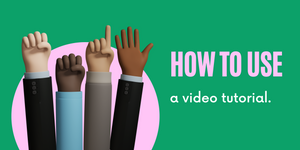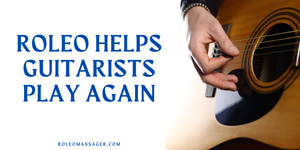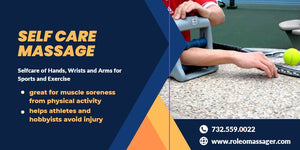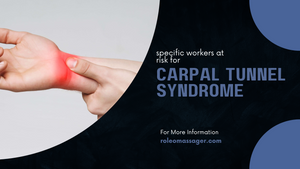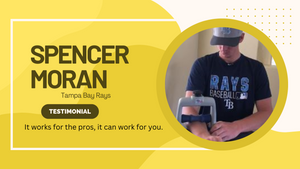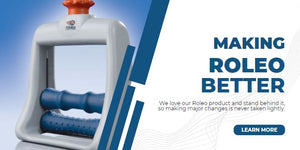Selfcare of Hands, Wrists and Arms for Sports and Exercise by Paul Kleiman

Athletes, professional and amateur, often turn to massage therapy to help their bodies recover, and to prevent chronic injuries by keeping muscles and tendons supple and elastic. This is especially true of activities with repetitive motions and stress of the hands and arms, such as Pickleball, tennis, golf, baseball, and even weight training.
Some Pickleball players use both hands, meaning they could get golfer’s elbow and/or tennis elbow in either or both hands! Shouldn’t they get their own condition? Pickleball-elbow? Pick-elbow? Pickle-elbow?
In any event, whether it hurts on the one side of the elbow or forearm or the other, it hurts, getting in the way of enjoying and excelling at the activity, and it’s caused by repetitive bending of the wrist, under force, to either extend, flex, or rotate it, which happens each time you swing a racquet, bat, or club, throw a baseball, or roll a bowling ball. Or do curls at the gym.
While we’re at it, let’s not forget all the people with repetitive strain of the forearms, wrists, and hands unrelated to sports or exercise: chefs, plumbers, auto mechanics, professional drivers, people with desk jobs, hair stylists, dentists and dental hygienists... massage therapists! This is the short list. These jobs all require similar repetitive movements to sports. It’s safe to say that a majority of adults are at risk of developing chronic pain just from doing their jobs.
It’s well established that massage therapy is great for muscle soreness from physical activity. It’s also proven that regular massage helps athletes and hobbyists avoid injury and chronic conditions caused by repetitive strains that are common consequences of sports and exercise. But for many people, massage is a luxury. And to treat pain from chronic repetitive strain injuries of the wrist or forearm, such as can be caused by pickleball, tennis, golf, baseball, cricket, curling, etc., massaging the area every day for a week or so might be indicated. And then regular massage every week or two for maintenance. Not many people outside of professional athletes with access to a team staff or the very wealthy can afford that.
Even if you can afford a massage every other week, do you want to spend most of the time on your forearms and hands? When I get a massage, the main areas I want to address are the ones that get the sorest, like my neck, shoulders, lower back, and hips. Feet can often use some attention, and also the legs, which support the hips and back and are involved in most sports or exercise. As a former massage therapy educator and practitioner I recognize the benefits of a full body treatment, but I prefer the therapist focus on the above areas and spend little if any time on my face, hands, wrists, and forearms.
Please note, there’s nothing wrong with a good facial massage, but many therapists are not specially trained in it. Having a stranger’s hands on your face requires a lot of trust, and it’s just not for everyone. So, unless treating a headache, TMJ or sinus congestion, I prefer the therapist concentrate elsewhere.

The scalp is another story. Even if you never had a professional massage, you’ve probably had your hair washed at a salon, which usually involves some scalp massage, and know how great and relaxing it feels. Plus, it’s harder for me to reach.
That’s right. Another reason I prefer therapists not worry so much about face, hands, wrists, and forearms in favor of other problem areas is, I can reach those. I can massage my own face, which is easy for headaches and TMJ pain because I can feel exactly what spots to work on and how deeply. I often treat my TMJ with self-massage. But what about hands, wrists, and forearms? Sure, I can massage one hand with the other very effectively, but then the hand I was massaging with needs a massage, so I massage it with the one I just treated... which then, of course, needs to be re-treated. You get the point.
This dilemma, as well as the expense of daily massage for chronic hand and forearm pain, is resolved by the Roleo Arm and Hand Massager. Most self-care tools require users to provide pressure by squeezing or pulling or using gravity. The Roleo provides its own massage pressure. In fact, you don’t need to use your other hand at all. Roleo has easy-to-install suction cups that, when affixed to a smooth surface, allow it to be used “hands free.” The user controls how it feels by adjusting the pressure, changing the speed and angle of the arm in between the rollers, and by focusing on sore, “trigger point” areas.
There are a lot of products out there, and many of them work. That being said, there is nothing affordable for self-massage of the torso (neck, shoulders, hips and back) besides trigger point, “cane” type devices that require some practice, knowledge of massage points, and for the user to provide pressure by pulling with the arms. Foam rolling uses gravity. Other roller products, meant for arms and legs, mostly, require the user to hold the product and move it up and down, or supply pressure through gripping with the hands.
We feel that Roleo is the best product out there for hand, wrist, and forearm pain from repetitive strains. It’s so easy to use, can be affixed to a desk or table (or window, for that matter), and requires no physical exertion outside of moving the arm back and forth between the rollers. It’s intuitive to use. Since it is “self-massage,” the user is in full control of the amount of and placement of the pressure, so it’s never too strong or too light, or missing the spot.
Regular massage therapy helps with chronic pain from sports, exercise, jobs, and hobbies, but most people don’t have the time or money to receive it often enough. Products like Roleo are great for everyday use and treatment, and as a bridge between regular massage sessions with a therapist.
- Paul massageuco@aol.com
